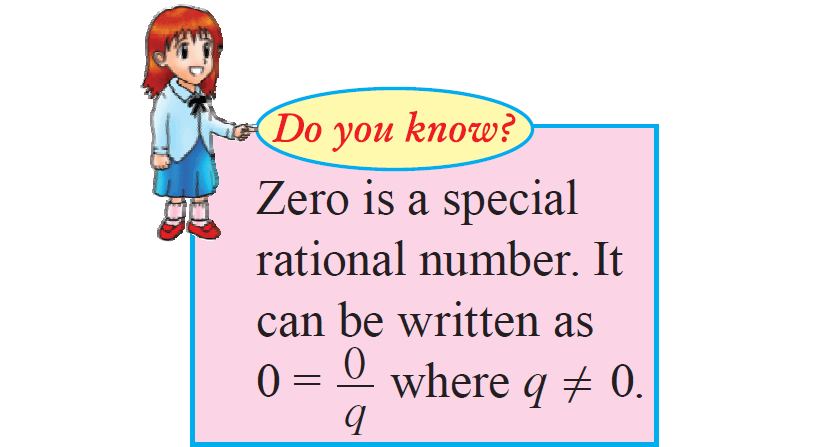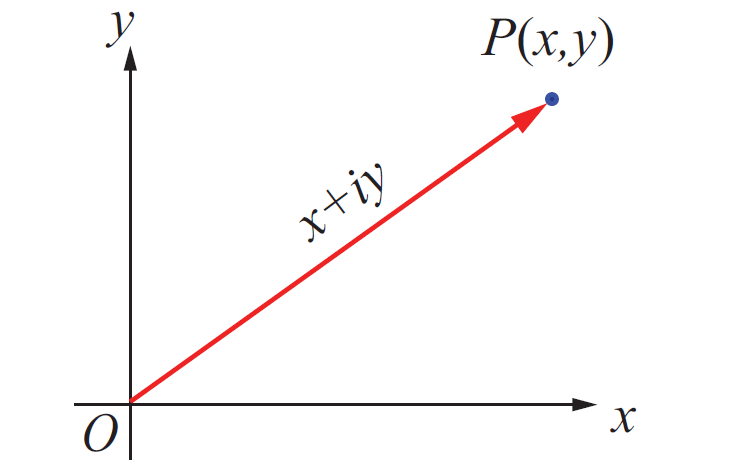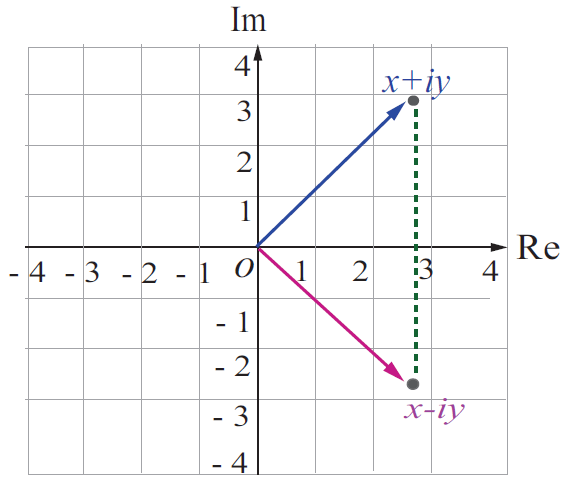PROPERTIES OF REAL NUMBERS
There are some properties of real numbers like closure property, commutative property and associative property.
Let us explore these properties on the four binary operations (Addition, subtraction, multiplication and division) in mathematics.
Addition
Closure Property :
The sum of any two real is always a real number. This is called ‘Closure property of addition’ of real numbers. Thus, R is closed under addition
If a and b are any two real numbers, then (a +b) is also a real number.
Example :
2 + 4 = 6 is a real number.
Commutative Property :
Addition of two real numbers is commutative.
If a and b are any two real numbers,
then, a + b = b + a
Example :
2 + 9 = 11
9 + 2 = 11
Hence, 2 + 9 = 9 + 2.
Associative Property :
Addition of real numbers is associative.
If a, b and c are any three real numbers,
then a + (b + c) = (a + b) + c
Example :
2 + (4 + 1) = 2 + (5) + = 7
(2 + 4) + 1 = (6) + 1 = 7
Hence, 2 + (4 + 1) = (2 + 4) + 1
Additive Identity :
The sum of any real number and zero is the real number itself.
If 'a' is any real number, then
a + 0 = 0 + a = a
Zero is the additive identity for real numbers.
Example :
7 + 0 = 0 + 7 = 7

Additive Inverse :
(- a) is the negative or additive inverse of 'a'.
If 'a' is a real number, then there exists a real number (-a) such that
a + (-a) = (-a) + a = 0
Examples :
Additive inverse of 5 is (-5)
Additive inverse of (-5) is 5
Additive inverse of 0 is 0 itself.
Subtraction
Closure Property :
The difference between any two real numbers is always a real number.
Hence R is closed under subtraction.
If a and b are any two real numbers, then (a - b) is also a real number.
Example :
5 - 2 = 3 is a real number
Commutative Property :
Subtraction of two real numbers is not commutative.
If a and b are any two real numbers,
then (a - b) ≠ (b - a)
Example :
5 - 2 = 3
2 - 5 = -3
Hence, 5 - 2 ≠ 2 - 5
Therefore, Commutative property is not true for subtraction.
Associative Property :
Subtraction of real numbers is not associative.
If a, b and b are any three real numbers, then
a - (b - b) ≠ (a - b) - c
Example :
9 - (7 - 2) = 9 - 5 = 4
(9 - 7) - 2 = 2 - 2 = 0
Hence, 9 - (7 - 2) ≠ (9 - 7) - 2.
Therefore, Associative property is not true for subtraction.
Multiplication
Closure Property :
The product of two real numbers is always a rational number. Hence R is closed under multiplication.
If a and b any two real numbers, then
a ⋅ b = ab is also a real number.
Example :
5 x 9 = 45 is a real number
Commutative Property :
Multiplication of real numbers is commutative.
If a and b are any two real numbers, then
a ⋅ b = b ⋅ a
Example :
9 ⋅ 7 = 63
7 ⋅ 9 = 63
Hence, 9 ⋅ 7 = 7 ⋅ 9.
Therefore, Commutative Property is true for multiplication of real numbers.
Associative Property :
Multiplication of real numbers is associative.
If a, b and c are any three real numbers, then
a ⋅ (b ⋅ c) = (a ⋅ b) ⋅ c
Example :
2 ⋅ (4 ⋅ 5) = 2 ⋅ 20 = 40
(2 ⋅ 4) ⋅ 5 = 8 ⋅ 5 = 40
Hence, 2 ⋅ (4 ⋅ 5) = (2 ⋅ 4) ⋅ 5.
Therefore, Associative Property is true for multiplication.
Multiplicative Identity :
The product of any real number and 1 is the rational number itself. ‘One’ is the multiplicative identity for real numbers.
If a is any real number number, then
a ⋅ 1 = 1 ⋅ a = a
Example :
5 ⋅ 1 = 1 ⋅ 5 = 5
Multiplication by 0 :
Every real number multiplied by 0 gives the result 0.
If a is any real number, then
a ⋅ 0 = 0 ⋅ a = 0
Example :
5 ⋅ 0 = 0 ⋅ 5 = 0
Multiplicative Inverse or Reciprocal :
For every real number a, a ≠ 0, there exists a real number 1/a such that a ⋅ 1/a = 1. Then 1/a is the multiplicative inverse of a.
If 'a' is a real number, then 1/a is the multiplicative inverse or reciprocal of it.
Examples :
The reciprocal of 2 is 1/2.
The reciprocal of 1/3 is 3.
The reciprocal of 3 is 1/3.
The reciprocal of 1 is 1.
The reciprocal of 0 is undefined.
Division
Closure Property :
The collection of non-zero real numbers is closed under division.
If a and b are two real numbers, such that a/b ≠ 0, then (a ÷ b) is always a real number.
Example :
2 ÷ 3 = 2/3 is a real number
Commutative Property :
Division of real numbers is not commutative.
If a and b are two real numbers, then
a ÷ b ≠ b ÷ a
Example :
8 ÷ 2 = 8/2 = 4
2 ÷ 8 = 2/8 = 1/4
Hence, 8 ÷ 2 ≠ 2 ÷ 8.
Therefore, Commutative Property is not true for division of real numbers.
Associative Property :
Division of real numbers is not associative.
If a, b and c are any three real numbers, then
a ÷ (b ÷ c) ≠ (a ÷ b) ÷ c
Example :
8 ÷ (4 ÷ 2) = 8 ÷ 2 = 4
(8 ÷ 4) ÷ 2 = 2 ÷ 2 = 1
Hence, 8 ÷ (4 ÷ 2) ≠ (8 ÷ 4) ÷ 2.
Therefore, Associative Property is not true for division of real numbers.
Distributive Property
Distributive Property of Multiplication over Addition :
Multiplication of real numbers is distributive over addition.
If a, b and c are any three real numbers, then
a(b + c) = ab + ac
Example :
3(6 + 7) = 3(13) = 39
3(6 + 7) = (3 ⋅ 6) + (3 ⋅ 7) = 18 + 21 = 39
Hence, 3(6 + 7) = (3 ⋅ 6) + (3 ⋅ 7).
Therefore, Multiplication is distributive over addition of real numbers.
Distributive Property of Multiplication over Subtraction :
Multiplication of real numbers is distributive over subtraction.
If a, b and c are any three real numbers, then
a(b + c) = ab + ac
Example :
5(10 - 7) = 5(3) = 15
5(10 - 7) = (5 ⋅ 10) - (5 ⋅ 7) = 50 - 35 = 15
Hence, 5(10 - 7) = (5 ⋅ 10) - (5 - 7).
Therefore, Multiplication is distributive over subtraction of real numbers.

Apart from the stuff given above, if you need any other stuff in math, please use our google custom search here.
Kindly mail your feedback to v4formath@gmail.com
We always appreciate your feedback.
©All rights reserved. onlinemath4all.com
Recent Articles
-
First Fundamental Theorem of Calculus - Part 1
Apr 17, 24 11:27 PM
First Fundamental Theorem of Calculus - Part 1 -
Polar Form of a Complex Number
Apr 16, 24 09:28 AM
Polar Form of a Complex Number -
Conjugate of a Complex Number
Apr 15, 24 11:17 PM
Conjugate of a Complex Number

